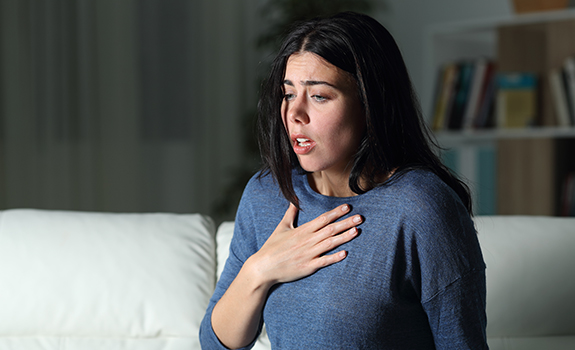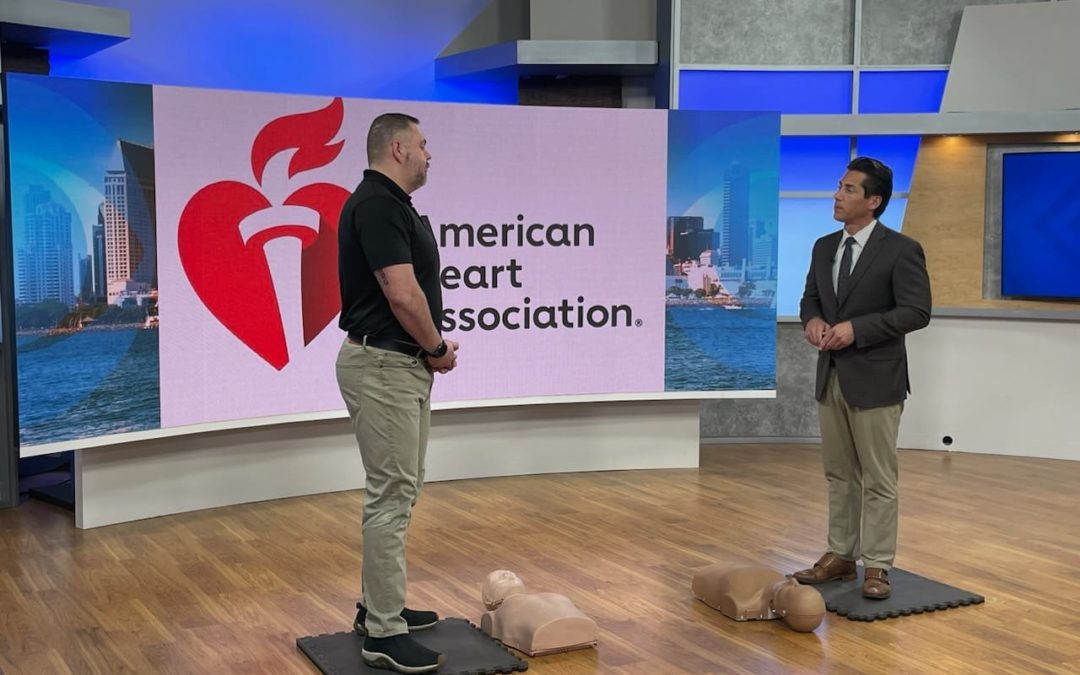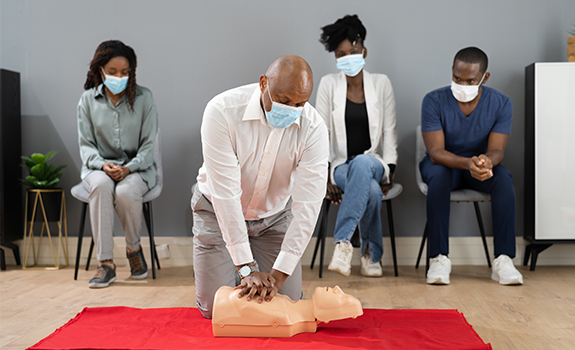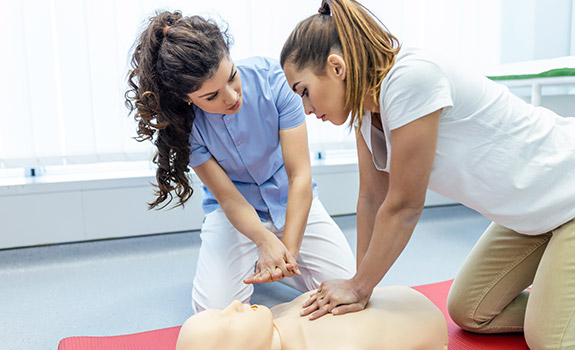When performing hands-only CPR or chest compressions, it’s important to know if you’re dealing with mild or severe hypoxia – and what to do in either scenario.
What is Hypoxia?
If a victim suffers a breathing emergency and is deprived of adequate oxygen, hypoxia might occur. Hypoxia is a condition in which insufficient oxygen reaches the cells, and it can result from an obstructed airway, shock, inadequate breathing, drowning, strangulation, choking, suffocation, cardiac arrest, head trauma, carbon monoxide poisoning, or anaphylactic shock.
What Are the Signs of Hypoxia?
Signs and symptoms of hypoxia can include:
- Increased heart rate
- Cyanosis – a condition that develops when tissues do not get enough oxygen and turn bluish, particularly in the lips
- Changes in the level of consciousness (LOC)
- Restlessness
- Chest pain
There are two types of breathing (also referred to as respiratory) emergencies:
- respiratory distress, a condition in which breathing becomes difficult
- respiratory arrest, a condition in which breathing completely stops
Respiratory distress can lead to respiratory failure, which occurs when the respiratory system is beginning to shut down, which in turn can lead to respiratory arrest.
These breathing problems can be identified by watching and listening to a victim’s breaths and by asking the victim how they feel if they are awake and alert. Knowing which type of emergency the victim is experiencing is essential to knowing how to help.
How Can You Prevent Someone Going Into Mild Hypoxia?
When you find a victim experiencing difficulty breathing – regardless of the cause – immediate care is essential. First, maintain an open airway and call 911. Help the victim to a comfortable position that makes breathing easier, such as sitting and leaning slightly forward.
Keep the victim from getting chilled or overheated, and administer emergency oxygen and monitor oxygen saturation, if available.
If the victim is not breathing but has a definitive pulse, the victim is most likely in respiratory arrest. To care for a victim experiencing respiratory arrest, the first step is to give ventilations. Give one ventilation every 5 to 6 seconds for an adult, with each ventilation lasting about one second and making the chest rise. Give one ventilation about every 3 seconds for a child or infant.
If ventilation is not successful, move to chest compressions and check the airway for an obstruction. The American Heart Association recommends 100–120 compressions per minute until emergency care arrives. Chest compressions can be incredibly helpful in preventing severe hypoxia, and should be performed until an ambulance arrives on the scene.
Ready to get up-to-date on your CPR knowledge? Take a CPR class in San Diego or Tustin with Express Training today!




